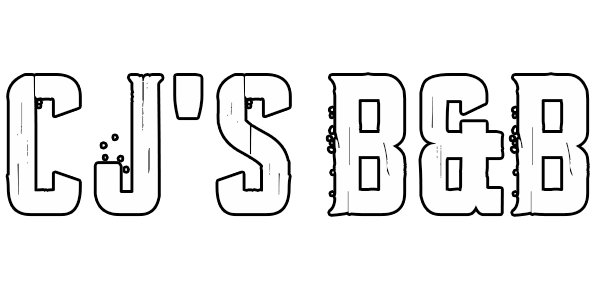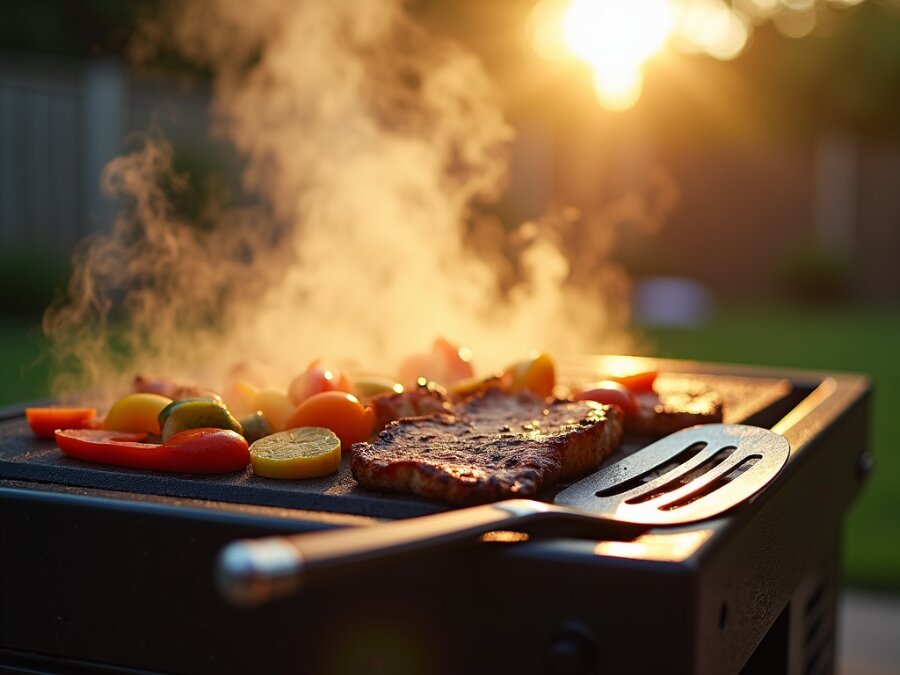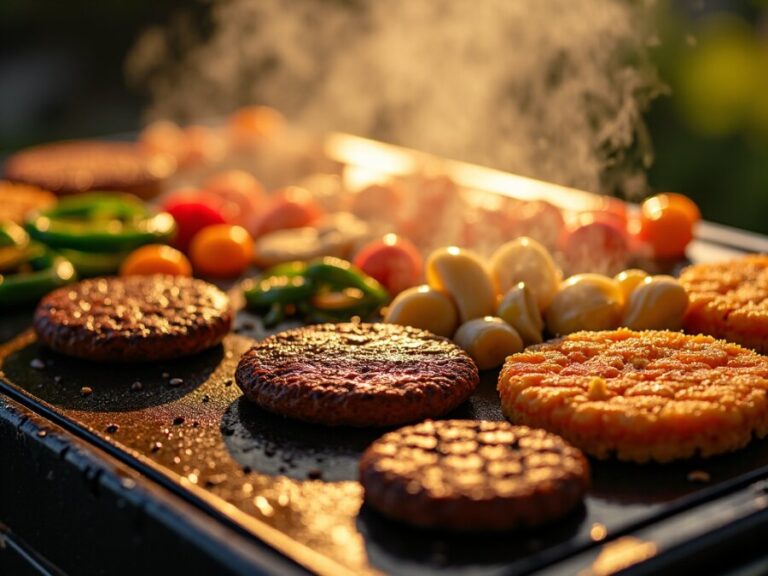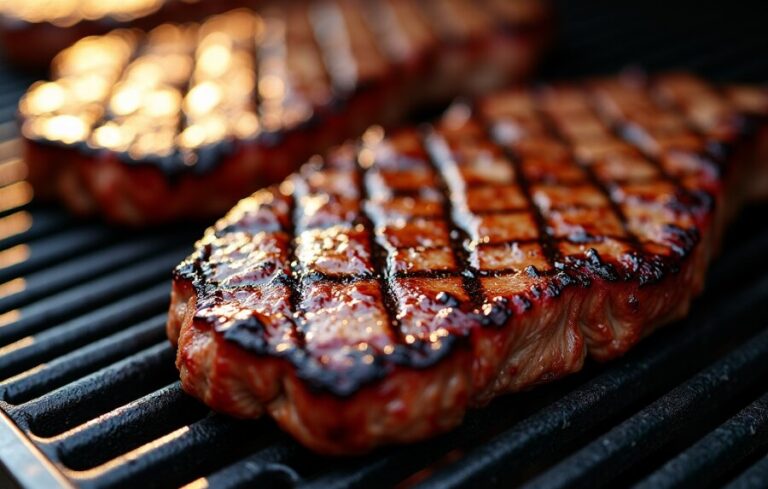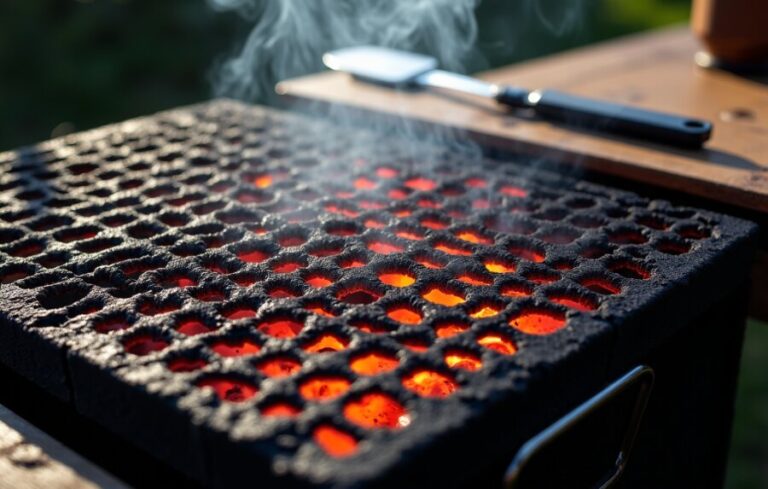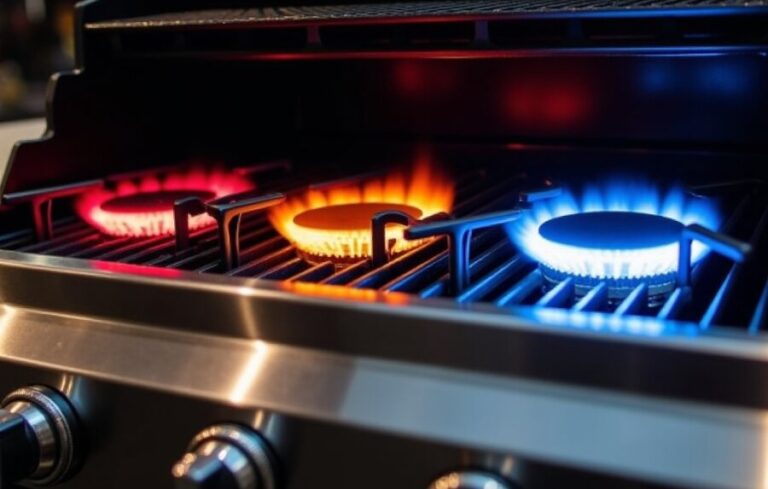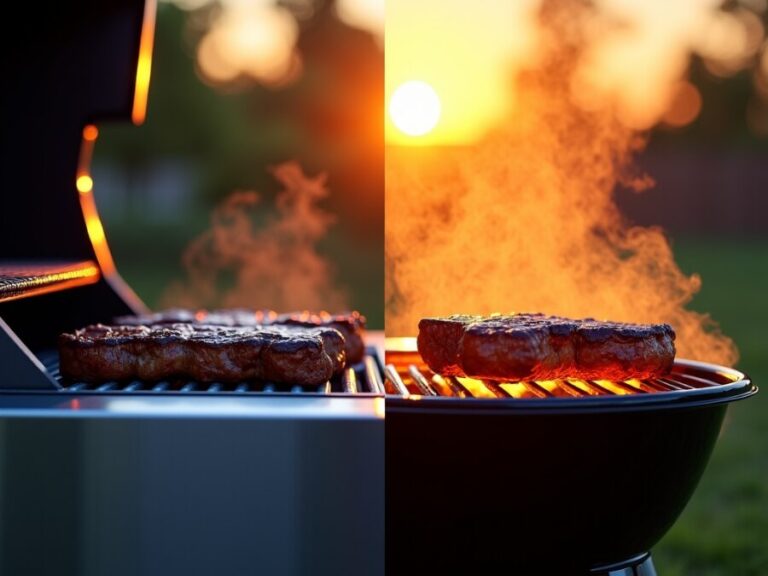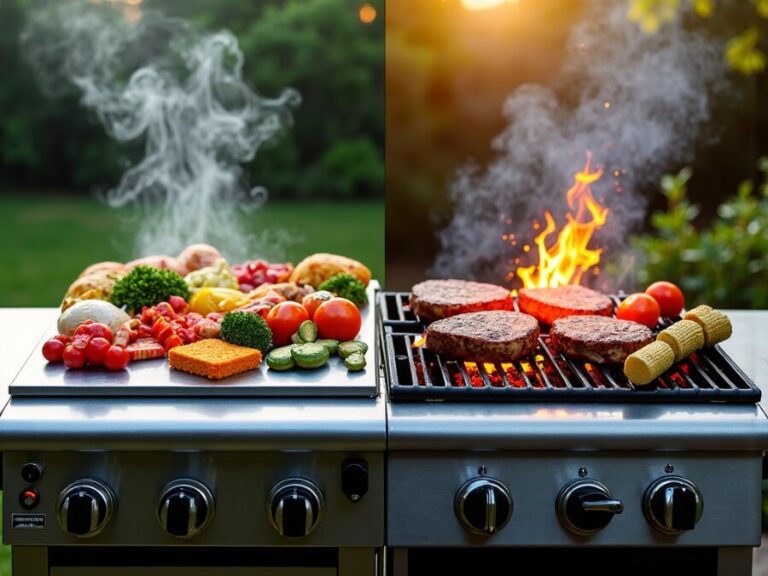Our evaluations and product assessments are conducted using a thorough and unbiased approach. Should you choose to buy any items through our provided links, we might receive a commission Read our disclosures.
Flat Top Grilling Tips: The Basics
Flat top grilling is your golden ticket to outdoor cooking bliss. It’s not just versatile, it’s also precise. To make the most of it, let’s nail down some safety tips and learn the ropes of grill maintenance.
Grilling Safety Tips
When I fire up my flat top grill, I keep safety at the forefront. Here’s my go-to checklist:
- Where to Set Up: Always place your grill on a sturdy, level surface. Think concrete pad or a flat spot in your yard. This stance keeps tipping and fires at bay.
- Keep Your Distance: It’s smart to set your grill at least 10 feet away from your house or the garage. Anything closer and you might risk heating up nearby stuff to a dangerous level.
- What to Wear: Skip the long sleeves and the dangly clothing. These can easily catch fire. Also, if you’re wearing an apron, keep those strings tied back tight.
- Clean After Every Use: A clean grill is a safe grill. I make it a point to scrub mine down with a grill brush after each cookout and always empty the grease tray before it overflows.
- Get the Right Tools: The right gear makes grilling even more fun. Keep spatulas, tongs, oil squirt bottles, a scrub brush, scraper, cast-iron burger press, and a melting dome within arm’s reach. These gadgets make a world of difference.
Cleaning and Maintenance
Keeping your flat top grill in peak condition doesn’t take much effort if you keep up with regular maintenance. Here’s my routine:
- Quick Clean After Use: Right after grilling, while the griddle is still warm (but not hot), I scrape off food residues. Warm surfaces mean easier cleaning. Just a grill brush and some water will do the trick.
- Deep Clean Every Few Uses: A deeper clean every so often does wonders. I use mild detergent, warm water, and a soft scrub pad. This combo gets rid of any grease or buildup.
- Manage the Grease: Keeping an eye on the grease tray is a must. Emptying it regularly prevents that nasty grease fire and keeps your grilling safe and enjoyable.
With these easy cleaning and maintenance steps, old faithful will keep serving up delicious meals for years. For a detailed guide, check out my article on cleaning a flat top grill.
By following these basics and sticking to good habits, flat top grilling becomes a safe, satisfying, and clean hobby. Ready to fire it up?
Types of Griddle Plates
Picking the right griddle plate can seriously level up your flat top grilling game. Each type brings different perks and quirks, impacting how you cook. Let’s break it down into three main types: steel, chrome, and composite.
Steel Plates
Steel plates are the workhorses of the griddle world. They’re tough, affordable, and take the heat like a champ, making them perfect for searing steaks or whipping up a big batch of pancakes.
| What’s Cool | What’s Not So Cool |
|---|---|
| Super Durable | Can get super hot in your kitchen |
| Handles High Heat | Scrubbing them is no fun |
| Budget-Friendly | More affordable, but more elbow grease too |
Steel plates can make your kitchen feel like a sauna and can be a pain to clean.
Chrome Plates
Chrome plates are the glam rock stars of the griddle world. They look slick and keep the heat in check, so you won’t sweat it out while cooking. Plus, they’re less likely to mess with your food’s flavours.
| What’s Cool | What’s Not So Cool |
|---|---|
| Easy on the Eyes | Cleaning needs extra TLC |
| Stays Cool | Requires special polish and tools |
| No Flavour Mess | More expensive than the other two |
The downside? Chrome plates need special care – think food-safe polish and a special scraper. But if you’re into less flavour transfer and easy flipping, these might be your jam.
Composite Plates
Composite plates are the new kids on the block and they’re tech-savvy. They cut down on cooking time and recover faster. They’re like the speedy race cars of griddles, thanks to their superb heat transfer.
| What’s Cool | What’s Not So Cool |
|---|---|
| Cooks Fast | Sits between steel and chrome on price |
| Quick Recovery | |
| Heat Efficient | |
| Middle Ground on Price | |
| Easier to Clean |
Composite plates mean you spend less time grilling and more time chilling. They’re efficient and great for both newbies and pro grillers. Want more tips for awesome grilling sessions? See my flat top grill recipes.
Picking the right griddle plate is all about what fits your grilling vibe. Each plate has its own flair, so whether you’re firing up steaks or flipping flapjacks, there’s one that’ll make your outdoor cooking rock.
Best Practices for Griddle Cleaning
Keeping my flat top grill spick and span is a game-changer for great food and making sure it lasts a long time. Here’s how I keep mine clean, both while cooking and managing all that grease.
Cleaning While You Cook
I’ve learned that a dirty griddle can mess up your cook and save you some serious elbow grease later. Here’s my go-to plan:
- Always Have a Scraper Ready: This trusty tool helps me get rid of bits and grease as soon as they land.
- Spray Bottle Magic: I keep a bottle of room temp water by my side. It helps break down grease without giving the griddle a thermal shock that might damage it (Vulcan Equipment).
- Frequent Wiping: I use a clean cloth to wipe down the surface now and then. It saves me a mountain of work once the cooking’s done.
- Say No to Ice: Ice might seem like it’d cool down your hot surface quickly, but it’s a no-no. It can crack the griddle. Room temp water is the way to go.
Here’s a quick rundown:
| Action | Frequency |
|---|---|
| Use a scraper | After every cooking session |
| Spray with water | As needed while cooking |
| Wipe surfaces | Every now and then during cooking |
Handling the Grease
Grease management is big. Here’s how I stay on top of it:
- Keep the Grease Tray Empty: Empty the tray regularly. A full tray can overflow or worse, catch fire while cooking (First Alert).
- Watch the Accumulation: I keep an eye on grease buildup, especially with fatty foods. Better safe than sorry.
- Douse Small Flare-Ups: If flames pop up from fat drips, a quick spray with my water bottle does the trick (First Alert).
These little habits keep my griddle clean and in great shape, season after season. Want more tips? Check out my guides on cleaning a flat top grill and seasoning a flat top grill. Keep those grills happy and cooking!

Cooking Techniques with a Flat Top Grill
I’m absolutely obsessed with how flexible a flat top grill can be. It’s a game-changer in my kitchen, especially for different cooking tricks. Let me share my go-to methods: searing vs. sautéing and sweating vs. browning.
Searing vs. Sautéing
Searing is all about cranking up the heat to get that mouth-watering brown crust. Sautéing, on the other hand, is a quick dance over high heat with a bit of oil. Here’s how each one works:
| Technique | Best For | Key Points |
|---|---|---|
| Searing | Thicker cuts of meat | Only flip once; get 60-70% to your desired internal temp before flipping. |
| Sautéing | Veggies and thin cuts | Flip often to avoid burning and get even cooking. |
I reach for the searing method when I’m cooking steaks and chicken breasts. That magic crust locks in all the yumminess. When it comes to sautéing, I’m all about those stir-fries and veggies that need to be quick and tasty.
Sweating and Browning
Sweating is like a slow dance with your veggies over low heat, coaxing out their flavours without reaching for that brown color. This method rocks for dishes where veggies team up, like fried rice. Think diced bell peppers, carrots, garlic, and shallots (Blackstone Products).
Browning, on the flip side, is all about that golden, flavourful transformation. The Maillard reaction works its magic between 280°F and 330°F, turning simple ingredients into flavour bombs (Blackstone Products).
I love using browning for searing meats and getting that beautiful finish on my roasted veggies. It’s that little extra that makes everything taste so much better.
Getting the hang of these techniques on a flat top grill opens up a whole buffet of delicious options. If you’re hungry for more, check out my favorite flat top grill recipes or learn about cleaning a flat top grill.
Seasoning Your Flat Top Grill
When it comes to making the most out of grilling on a flat top, seasoning the grill is something I never skip. Here, I’ll share why this process matters and guide you through a simple, step-by-step way to get it done.
Why Seasoning Matters
Seasoning your grill does a few key things. First off, it creates a nice, non-stick surface. This makes cooking smoother and cleanup a breeze. It also keeps rust and gunk away, so your grill lasts longer. Plus, it adds a bit of extra flavour to your food. Trust me, you don’t want your burgers sticking to the griddle.
When it comes to which oil to use, go for something with a high smoke point—like vegetable oil or canola oil. Follow the steps right, and your griddle will develop that shiny black surface, showing it’s well-seasoned. For bigger grills like the 71-inch-wide Traeger Flatrock, you might need a few rounds of seasoning (about four with avocado oil, each round taking around 10 minutes, according to Tom’s Guide).
Step-by-Step Seasoning Process
Preheat the Grill: Start by cranking up the heat for about 15 minutes. This gets the surface hot enough to soak up the oil.
Apply Oil: Turn off the heat and grab your chosen oil. Use a paper towel or a cloth to spread it evenly all over the griddle.
Heat Again: Fire up the grill again on high for another 10 minutes. This burns off the oil and creates that non-stick layer you’re after (Grill Masters Club).
Repeat: For new grills, repeat the oiling and heating steps a few times until the griddle has that glossy black look.
Final Check: Let the grill cool down, wipe off any extra oil, and you’re set to go for your next cookout.
By sticking to these steps, you can keep your grill in top shape and ready for action. For more tips and recipes, dive into my flat top grill recipes. And if you want to keep your grill spotless, check out my guide on cleaning a flat top grill.
Griddle Temperature Guide
Cooking on a flat top grill can be a game-changer. Getting those temperatures just right makes all the difference between a mediocre meal and a culinary masterpiece. Whether I’m browning veggies or searing a steak to perfection, controlling the heat is key.
Temperature Essentials
Different foods need different levels of heat. Here’s a quick cheat sheet I’ve found handy for my grilling adventures:
| Cooking Technique | Temperature Range °C – (°F) |
|---|---|
| Searing | 204 – 343 (400 – 650) |
| Sautéing | 148 – 204 (300 – 400) |
| Sweating | 115 – 148 (240 – 300) |
| Browning | 137 – 165 (280 – 330) |
Stick to these ranges, and you’ll notice how much better your food looks and tastes. The heat not only affects how food cooks but also how it feels and tastes.
The Maillard Reaction: Your Secret Weapon
Ever wondered why a perfectly grilled steak has such a great crust? It’s all thanks to the Maillard reaction, the magic that happens between 137°C and 165°C (280°F and 330°F). This reaction is why we love those brown, flavourful bits on our food. It’s like a flavour explosion in your mouth!
For my go-to grilling, I aim for 148°C to 204°C (300°F to 400°F). Blackstone’s gas griddles can go up to a sizzling 343°C (650°F), giving you the freedom to cook nearly anything you imagine. High temps are gold for searing meat, getting that crust just right, while lower temps are perfect for veggies and delicate stuff.
With these temperature tips, you’re set to cook like a pro and make dishes that’ll have everyone coming back for more. Need more inspiration? Check out my favorite flat top grill recipes and get grilling!

